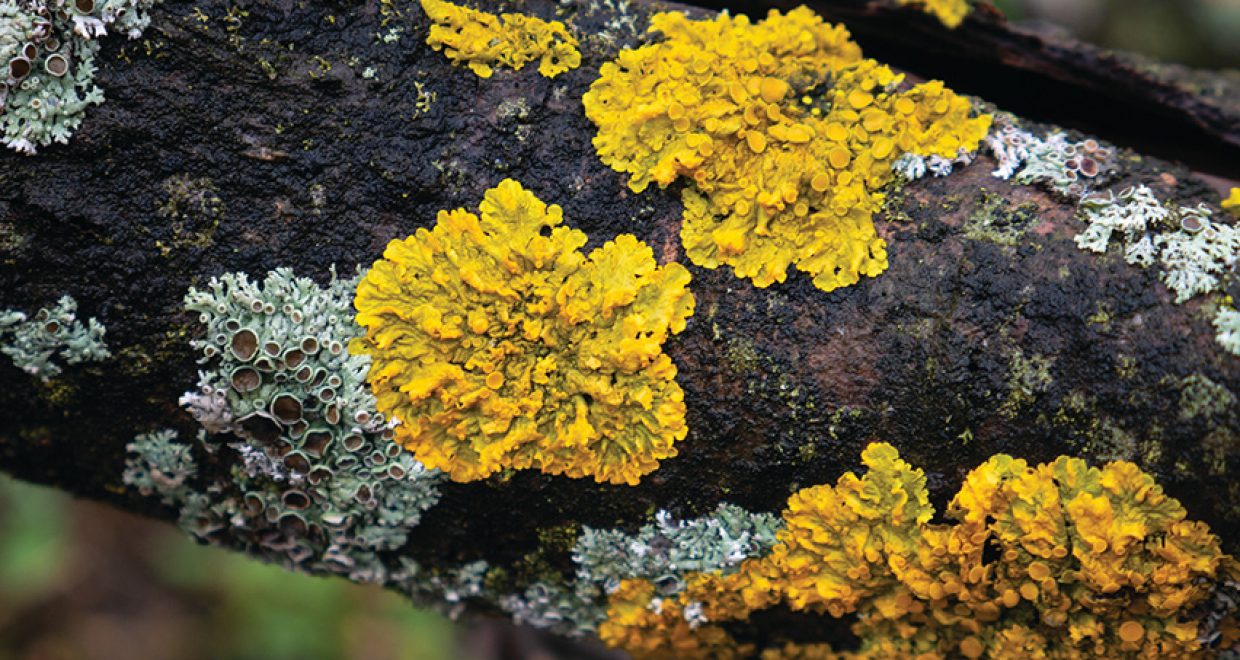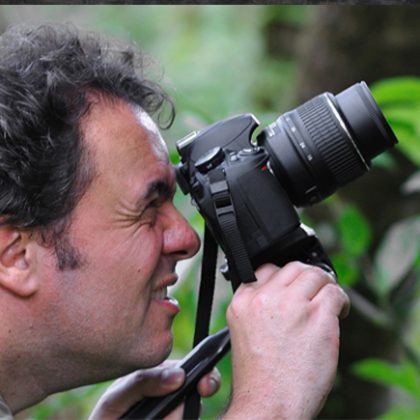Q&A with Dr Christopher J Ellis and Dr Leena Myllys, Senior Editors for The Lichenologist
Welcome to our “Meet the Editors” series, where we interview the editorial team about their work and their relationship to the journal. In this post we meet Dr Christopher J. Ellis and Dr Leena Myllys, Senior Editors for The Lichenologist
What are your areas of expertise and what led you to become Senior Editors of the journal?
CE: This is the first time The Lichenologist has had two Senior Editors. Although the Journal is focused on lichens, it publishes such a diversity of research, from biogeography to biochemistry, and it’s great to be a part of that. We’re dividing the administrative workload between us, but we both read proof stage manuscripts, and Leena’s expert knowledge of taxonomy and systematics is a real benefit to the Journal, and a reassurance for me – I couldn’t match Leena’s quality control of taxonomic papers! I have an ecological background, so I hope I can bring a different but complimentary perspective to our work.
LM: My research is in the field of lichen taxonomy, systematics and evolutionary history, an area with a strong tradition in Finland since the times of William Nylander and Edward Vainio in 1850s. I really love to be a researcher and a lichenologist but I have always had an interest in work of editors. Thus, becoming Senior Editor, seemed like a perfect opportunity to combine these two disciplines. However, I would have never taken this position without Chris, who is not only an expert on lichen ecology – an area I am unfamiliar with – but is also deeply rooted in the British lichenological tradition. Thanks to our former Senior Editor Peter Crittenden for suggesting this and inviting us for the job!
What are your top priorities for the journal?
CE: The Journal has such an important role to play in supporting the international community of lichenologists. We want to strengthen its reputation as the vehicle for the very best lichen research. There will always be a focus on rigour and excellent science, but we do want to work better for authors, providing an efficient review and production process. We also want to put the Journal at the centre of scientific discourse, and we look forward to working with Cambridge University Press to make that happen, with implementation of a fresh new article layout, a FirstView workflow, and appointment of a Social Media Editor expected to be our first steps.
LM: To keep the Journal as a tempting platform for lichenologists to disseminate their research. We also hope that researchers in the beginning of their research careers will find our journal. We can achieve this by offering authors high quality peer review, efficient editorial services and by inviting authors to a constructive dialogue in developing the Journal.
In terms of the research you publish, what are you on the lookout for and what would attract authors to want to publish and also, why should they submit to this journal over the competing journals?
CE + LM: Novelty is always exciting, but we understand the importance of testing the reproducibility of previous findings, being open to negative results. Context is also important, and many established ideas are based on studies in boreal and temperate biomes; the possibility of accepting more research from the tropics is exciting. Why submit? The Lichenologist has earned its strong reputation; it started in 1961 with a focus on Britain, and has evolved and adapted to become internationally modern. It has a strong Editorial Board and a rigorous process of review. There has been an explosion of new Journals, and scientific results are stepping outside the review process, but we believe Editorial support and strong review are needed more than ever these days, to maintain a secure canon of work. That’s something we invite authors to be part of.
What are some of the challenges facing the field today? What does this mean in terms of submitting research to the journal?
LM: Many lichenologists are taxonomists, which means that they work with discovery, description and classification of living organisms increasing our understanding of biodiversity on Earth. Yet there is a lack of sufficient funding for taxonomy and a decline in the paid positions of taxonomists. This in turn may lead to a decrease in the number of skilled next-generation researchers on this area. We need journals like The Lichenologist where researchers can make taxonomic information more accessible for a wider audience and, hopefully, in this way raise people’s awareness on the importance of basic research.
CE: It’s can be difficult these days to be a specialist, because many of the world’s challenges are multifaceted, and answers to problems are demanded quickly without time to dig deep. However, being a specialist is different from being narrowly focused, though creating that distinction is a challenge. Lichens are a specialist area of study, but they’re generalizable; they’re used to understand how evolution of diversity is structured by close species interactions, or how the outcome of climate change will be affected by symbioses etc. Papers that focus on discovery science, on the detail, are essential, but we’d also like to see papers submitted that use knowledge of lichens as a tool for addressing thematic questions, relating to the climate emergency, and the biodiversity crisis.
What are your favourite lichens?
LM: There are so many. One of my favourite lichen landscapes would be in Lapland where different Rhizocarpon species form such beautiful yellow colonies on boulder fields. Imagine how much duller the scenery would be without them. However, if I had to pick one, I would say Alectoria sarmentosa (witch’s hair), a large pendent epiphytic species associated with old-growth spruce. Forests in north-eastern Finland where branches of trees are covered by this lichen are straight out of fairy tales!
CE: That’s impossible. I love the lichens that tough it out in the most extreme environments; they’re just awe inspiring. However, I really learned about lichen diversity while surveying them as epiphytes in aspen stands, which are just such fantastic habitats to work in. There’s a rather plain looking lichen – Lecanora populicola – but because it’s so strongly associated with aspen, it’ll always be special for me.
Read Dr Ellis’s and Dr Myllys’s Editorial here.
Photo courtesy of Shutterstock.






